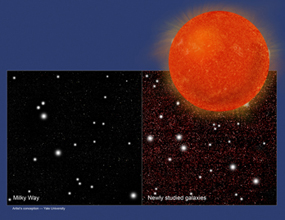Spitzer Stares into the Heart of New Supernova in M82
The closest supernova of its kind to be observed in the last few decades has sparked a global observing campaign involving legions of instruments on the ground and in space, including NASA’s Spitzer Space Telescope. With its dust-piercing infrared vision, Spitzer brings an important perspective to this effort by peering directly into the heart of the aftermath of the stellar explosion.
Dust in the supernova’s host galaxy M82, also called the “Cigar galaxy,” partially obscures observations in optical and high-energy forms of light. Spitzer can, therefore, complement all the other observatories taking part in painting a complete portrait of a once-in-a-generation supernova, which was first spotted in M82 on Jan. 21, 2014. A supernova is a tremendous explosion that marks the end of life for some stars. (more…)

